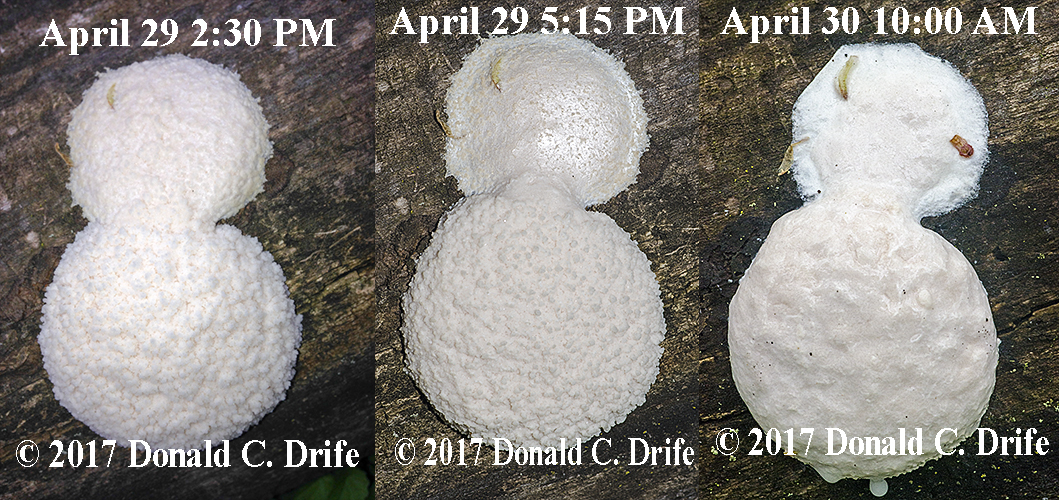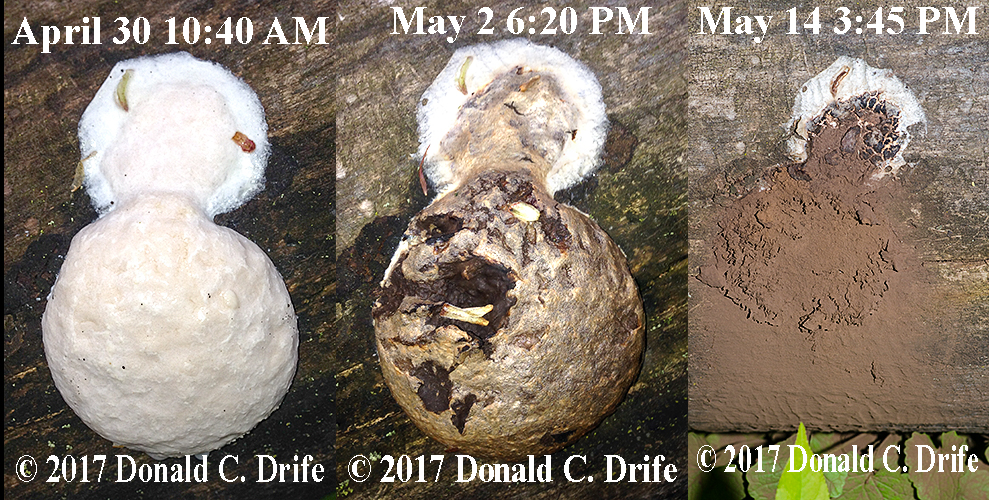Recently, my friend John pointed out a white blob on a rotting log in Royal Oak’s Tenhave Woods to Mushroom Mary and me. It looked similar to a puffball but not one that I was familiar with. I took a photo with my phone and returned later in the day to photograph it with a better camera. It had already changed shape. It was a slime mold. Mushroom Mary identified it as Enteridium lycoperdon also known as Reticularia lycoperdon. It has the common name of False-puffball. I began a series of photos showing how the fruiting body developed.
Slime molds are an odd bunch. For most of its existence, a slime mold lives as an organism with many nuclei but only one cell wall and is referred to as the plasmodium. During this stage, it moves, feeds, and dispels undigested organic matter. When mature, the plasmodium will form a fruiting body and produce spores. This happens over a period of hours to days, and the change is quite dramatic. Although it is known that exhaustion of food supplies and changes in temperature, moisture, and pH can trigger the change, the process is not fully understood.
False-puffball produces a relatively large, single, fruiting body called an aethalium. When I first saw it, its surface had a defined structure. This surface smoothed over in less than a day.

Closeup of surface of False-puffball Slime Mold showing changes in texture. The left and center images are less than 24 hours apart.
False-puffballs occur around the world with most records coming from North America and Europe. Africa, Asia, and South America also have a few records. (The distributions of all slime molds are poorly known.) False-puffballs produce brown spores. A similar species, Tapioca Slime Mold (Brefeldia maxima), produces black spores.
If you find a slime mold try to watch it for a few days. Some last only forty-eight hours. It’s fun to observe them changing and eventually disappearing. Watch one if you can.
I thank Mushroom Mary for teaching me about slime molds and for identifying this one. I also thank John for pointing out a “white lump” on a log that most people would have just passed by.
Copyright 2017 by Donald Drife
Webpage Michigan Nature Guy
Follow MichiganNatureGuy on Facebook



Super cool! How big was this? Do they have a ‘season’? I’ll keep an eye out in the future.
They are normally the size of a flattened golf ball. From what I’ve read they occur in spring and early summer. But slime molds often do not follow the rules.